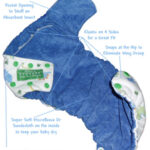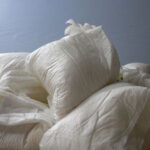A lot of parents tend to worry so much the moment they notice their newborns having rushes. Infant skin rashes are common and mostly, non-contagious, and easily treatable. Other common types of skin rashes such as “Pink Pimples” and “Erythema Toxicum” do not really need and treatment and given time, they just go away. However, because a child’s safety is a primary concern, and we want our children to be as flawless as possible, here are some types of infant skin rashes, signs, symptoms, and homemade remedies of which parents can take note.
Diaper Rash – diapers have become a necessity just like milk to any infant. Wetness, friction, irritants, allergens, and even diarrhea can cause your infants to develop diaper rash. According to Dr. Alan Greene, they are most common between 8 to 10 months and frequently appear when the baby is taking antibiotics, having loose stools, and on the first stages of weaning. The symptoms will always vary on the cause of the diaper rash and relatively differs on every child that is affected. The three most common types of diaper rash are Friction Diaper Rash, Seborrheic Diaper Rash, and Allergic Diaper Rash. Friction Diaper Rash affects almost all babies and is most common in areas where a lot of friction goes on like the inner thighs or under the elastics of diapers that may be too tight. This type of rash is usually red and shiny. Seborrheic Diaper Rash affects the skin folds in the groin area and may also appear on their face, scalp, or neck at the same time. This type is usually pink. Allergic Diaper Rash is common in exposed areas and the rash looks like poison oak. Other types of Diaper Rashes include Irritant Rash, Psoriasis, Allergic Rash, and Yeast Rash.
Diaper rashes can be treated with frequent diaper changes, protective lotions or creams, and giving your infant’s skin a time to “breathe” (from the diaper) goes a long way. Make sure you have a diaper that fits your child – meaning, nothing too tight. Also, studies have shown that breastfed babies are less prone to diaper rashes.
Erythema Toxicum – a common “splotchy” rash that appears in at least half of all the babies born on full-term. In Kids Health for Parent, the rash is described to consist of firm tiny bumps, yellowish or white in color, and with a ring of redness around it. This rash has the tendency to come and go and shift location on your infant’s body and is typically seen with the first two weeks after birth. It is harmless and therefore, do not require treatment. Just follow standard or physician-required (if applicable) guidelines for your baby’s skin care.
Milia – a type of infant skin rash that consists of tiny bumps on your baby’s face. This is also said to be found in nearly half of all infants. The bumps are usually less than a millimeter in size, yellow or white, and can be found on the tip of the nose, chin, cheeks, and forehead. Wash your baby’s face with warm water about two or three times a day and pat it dry. Do not use any form of treatment, oil, or lotion nor pinch or scrub the bumps because it may worsen the irritation and lead to an infection.
Pustular Melanosis – a common benign infant skin condition. It’s basically just a “birthmark” that disappears over time. Small blisters peel open which reveals a small freckle. The freckle may be surrounded by a small white collar for a time. These are most common under the chin, back of then neck, on the forehead, the lower back, or the shins. No need of treatment because the spots go away in approximately 3 months. However, be sure to check with your doctor to ensure that it is really Pustular Melanosis and not Herpes or Staph.
Sources:
Dr. Alan Greene, “Rashes”, http://www.drgreene.com/21_1069.html
Cynthia Dennison Haines, MD, “You’re Baby’s Skin: Rashes”, WebMD
Elana Pearl Ben-Joseph, “Erythema Toxicum”, KidsHealth for Parents
http://www.kidshealth.org/parent/infections/skin/erythema_toxicum.html







